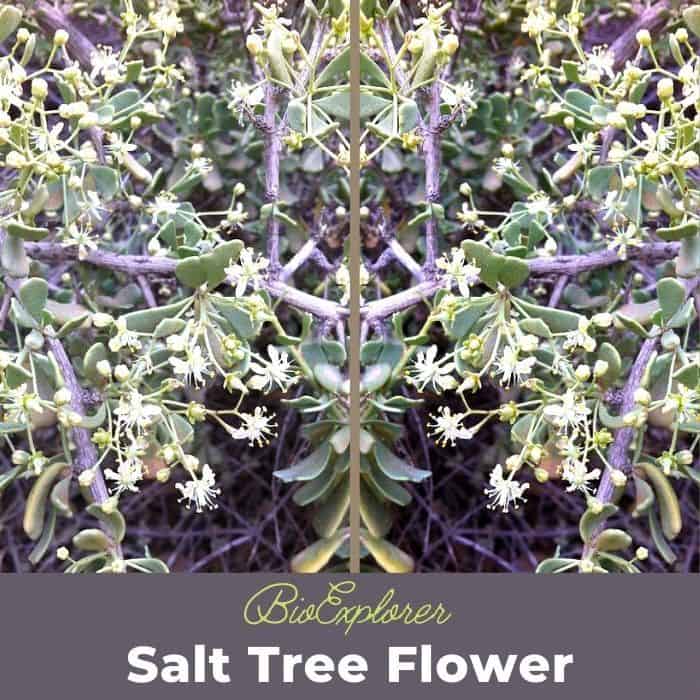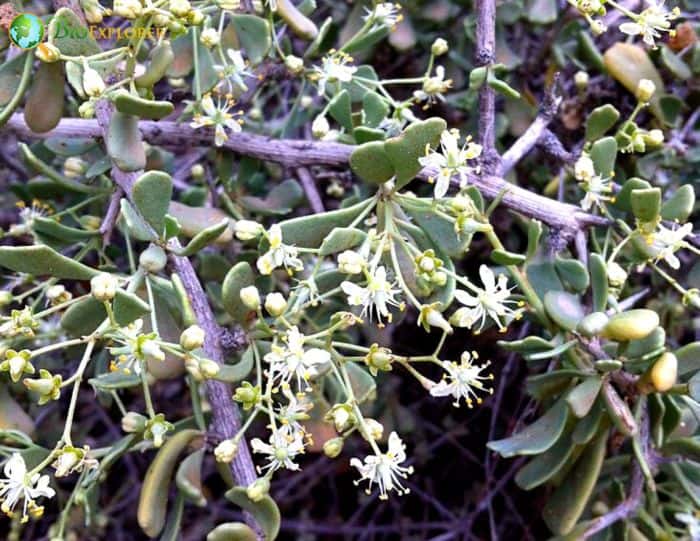
- Plant Type: Phanerophyte shrub.
- Common Names: Salt Tree, Nitre Bush.
- Colors: White
- Flower Dimensions: 0.16- 0.2 inches in diameter.
- Flowering Seasons/Month: April-May and October to December.
- Desserts with Salt Tree: Sahara, Arabian.
Salt Tree Flower Characteristics
The Salt tree is a drought-tolerant shrub of the Order Sapindales. It can grow up to 2.5 meters. This plant is native to the Northern African desert areas.

- The leaves of the Salt tree are alternate, wedge or sickled-shape, fleshy, and bluish-grey. The leaves measure 10 to 15 mm by 8 to 10 mm.
- The flowers of Nitraria retusa are small, fragrant, and whitish or greenish. They have 5 petals on short pedicels.
- The Salt tree has many erect stems, and the woody branches are spreading. When young, the twigs of the Nitraria retusa are furry.
- The Salt tree has fruits of a triangular drupe.
Salt Tree Flower Facts
- The Nitraria retusa[1] may be effective in acting as an agent of chemotherapeutic and cystotic activity in leukemia-lymphoma of humans.
- The experiment showed that the bioactive compounds from the leaf extract of N. retusa induced apoptosis of human cancer cells.
- In Morocco, the decoction of Salt Tree’s fresh leaves is used to treat poisoning, ulcer, stomach issues, heartburn, colitis, and colonic abdominal pain.
- Research showed that the aqueous fruit extract of Nitraria retusa[2] can prevent penconazole-induced kidney injury in adult rats.
- The fruit extracts of Nitraria retusa[3] have antioxidant and antimicrobial properties that are effective in the inhibition of TBARS and microbial growth of beef patties.
Suggested Reading: Kinds of Plants and Names
Cite This Page
APA7MLA8Chicago
BioExplorer.net. (2025, May 28). Salt Tree. Bio Explorer. https://www.bioexplorer.net/plants/flowers/salt-tree/.
BioExplorer.net. "Salt Tree" Bio Explorer, 28 May 2025, https://www.bioexplorer.net/plants/flowers/salt-tree/.
BioExplorer.net. "Salt Tree" Bio Explorer, May 28 2025. https://www.bioexplorer.net/plants/flowers/salt-tree/.











